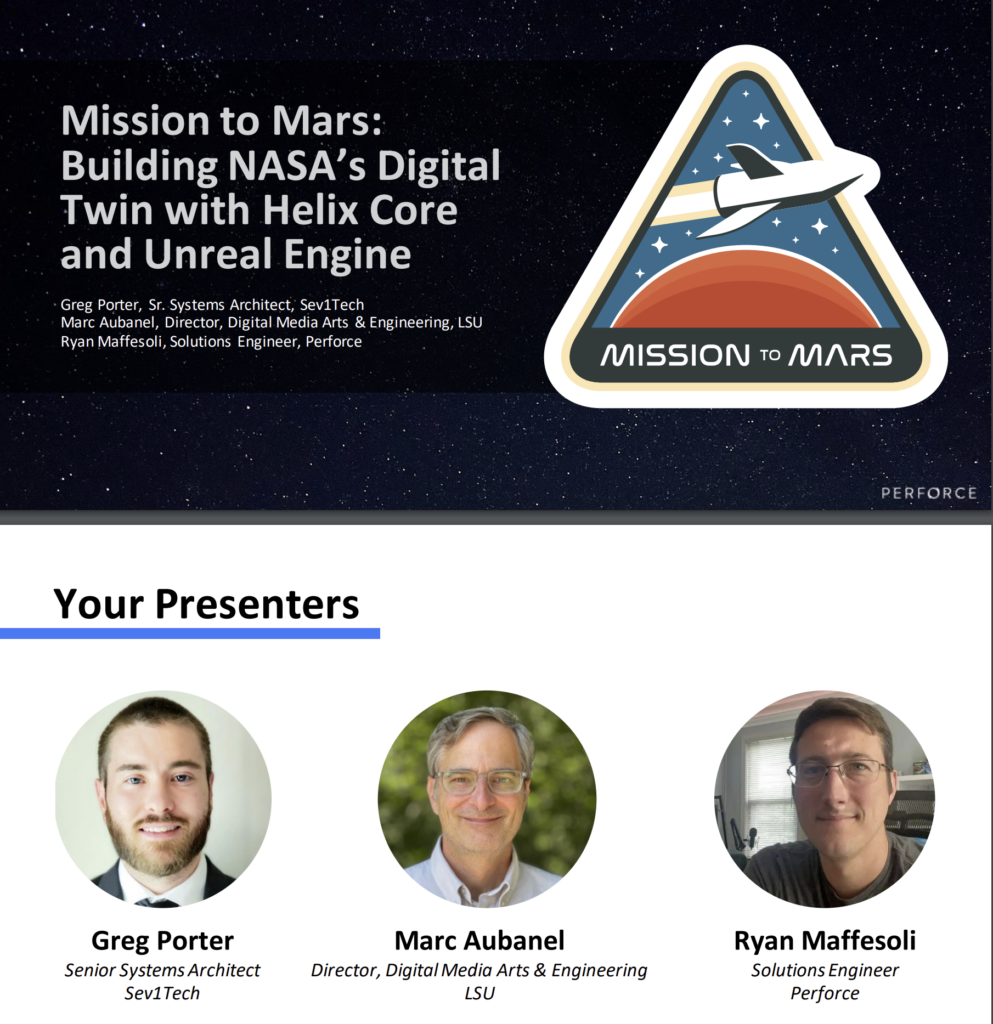
How Perforce’s Helix Core is Being Used to Help NASA Reach Mars
Perforce’s Helix Core version control system, the Epic Games Unreal Engine and other technologies are being used to digitally replicate NASA’s Michoud Assembly Facility in New Orleans that is behind the mission that will someday send the first astronauts to Mars, according to Perforce.
Real-time technology is being used to create a “digital twin” that Perforce said will enable NASA to develop data-driven models that replace time and cost-intensive, real-world design testing.
Project NCAM is the name of the digital twin project that is being led by NASA, Louisiana State University (LSU) and technology solutions provider Sev1Tech. Even the position of
NASA’s Louisiana facility was positioned “where it is in Louisiana because it has easy port access to get everything right over to launch,” Ryan Maffesoli, solutions engineer at Perforce, said Feb. 7, during the webinar “Mission to Mars: Building NASA’s Digital Twin with Helix Core and Unreal Engine.”
Maffesoli was joined by Greg Porter, senior systems architect at Sev1Tech and Marc Aubanel, director of Digital Media Arts & Engineering at LSU.
 During the webinar, they discussed use cases for the digital twin, including real-time location of components, environmental conditions testing, and augmented reality (AR)-based job instruction.
During the webinar, they discussed use cases for the digital twin, including real-time location of components, environmental conditions testing, and augmented reality (AR)-based job instruction.
They also explained how a secure and scalable single source of truth is being created for iterating on 3D environments using Helix Core. Helix Core helps teams develop a secure, scalable single source of truth for development using real-time engines including Unreal, according to Perforce.
Also being created is a “digital thread” to connect and secure all data in the cloud, while a foundation is being built for digital twin development.
The companies also pointed out how the Unreal Engine is being used to build real-time 3D environments.
NASA’s facility has been growing. “Since its inception, they’ve been adding buildings to it so not all the floors are at the same level,” said Aubanel.
“I’m sure it wouldn’t be built this way if they built the entire facility in one go,” he said.
He added: “It’s a bit of a Frankenstein when it comes to all these different assembly facilities with floors that are a different amount of levelness or evenness. So I’m sure it’s a challenging facility for them to navigate through.”
In response, Maffesoli said: “That’s something that, to be honest, I hadn’t really considered where … with the digital twin and all that, obviously laying out things in advance or testing or even being able to check where things are in real time [is possible] but to have that precision to check how level the floor is for these rocket engines for placement and all that is fantastic, and that’s great to hear.”
The digital twin “doesn’t actually store data itself,” Porter pointed out. “It’s connecting to these systems and getting that real-time data flow coming into it,” he pointed out.
Meanwhile, it is “nice to see … that data is staying, or the source of truth for those individual pieces, is staying kind of with the property domain of each individual part,” said Maffesoli.
He added: “That thread allows you to access that data quickly and not create an opportunity for duplicate data becoming out of sync or anything along those lines.”
